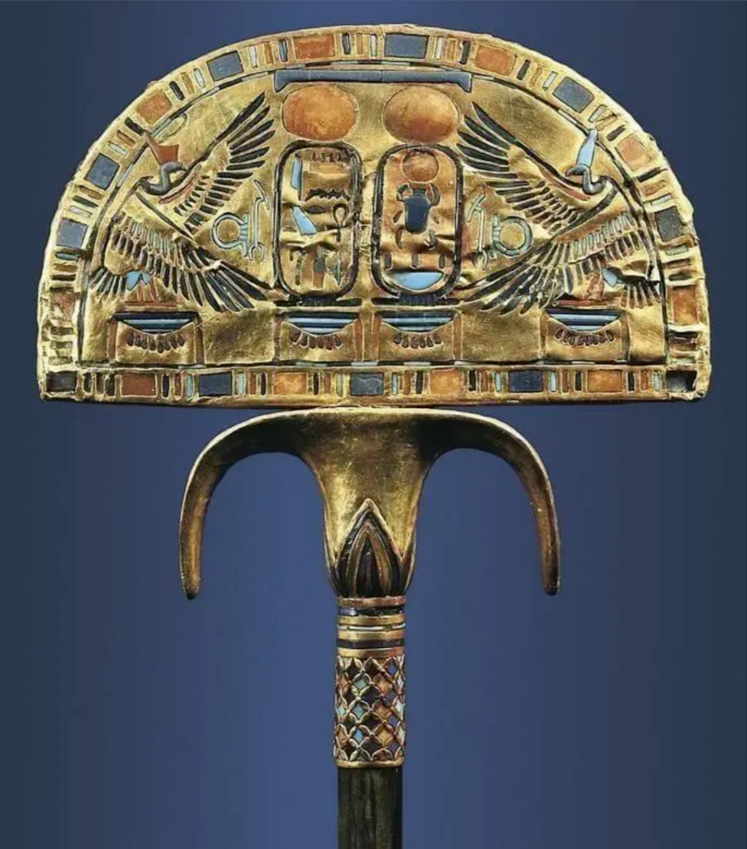This fascinating Egyptian revival jewelled fan brooch was created by the imagination of Cartier’s brilliant designer in London in 1923. It is mounted with an Egyptian glazed steatite plaque inscribed with hieroglyphs within an onyx, sapphire and diamond border decorated with lotus flowers and papyrus motifs.
Fascinating fan brooches
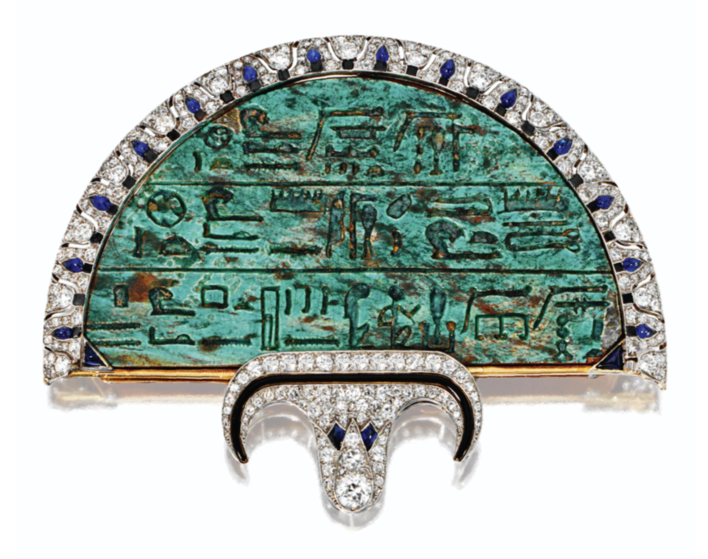
The reverse of the jewel is applied with a gold plaque bearing the translation of the hieroglyphic inscription at the back of the plaque, which mentions Mentu-Em-Hat, mayor of Thebes around 600 BC, (see the image below).
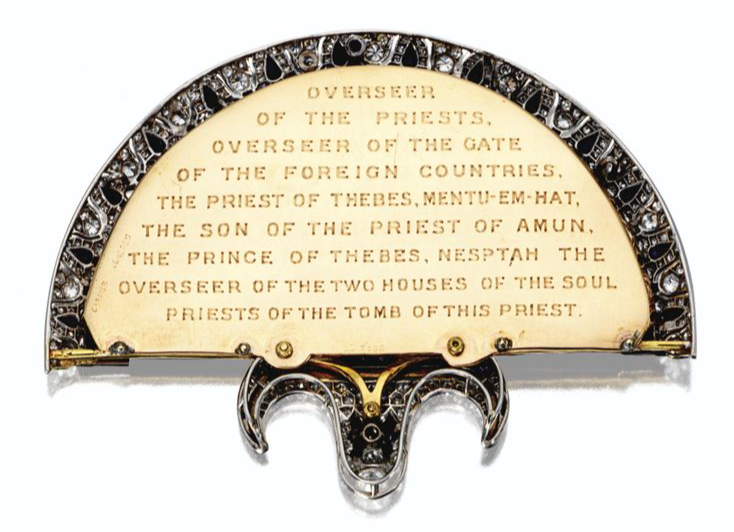
Following the discovery of the tomb of Tutankhamun by Lord Carnarvon and Howard Carter in 1922, Louis Cartier, himself a collector of Egyptian antiquities, promoted the creation of a series of jewels and jewelled objects incorporating fragments of Egyptian works of art, where the challenge lay in creating a contemporary jewel around an ancient piece, therefore giving a new lease of life to a fragment of antiquity.
This stunning brooch, so powerful in its simplicity, is one of such jewels. Here the semi-circular plaque is brilliantly adapted to the outline of the flabellum – a type of Egyptian fan.
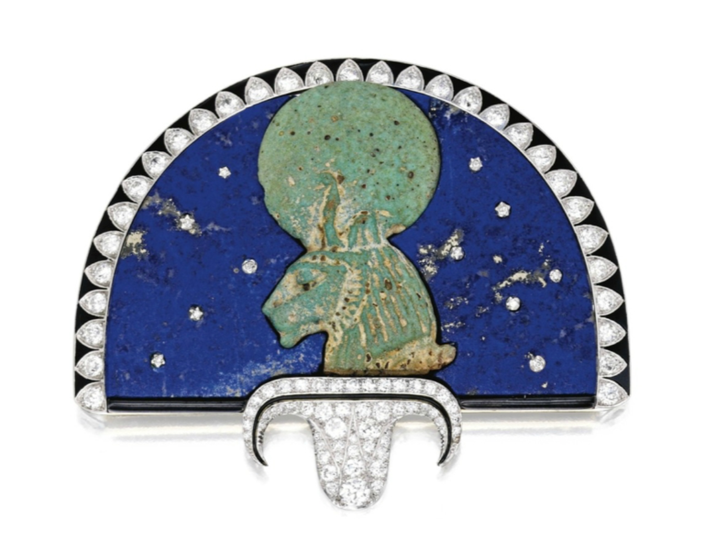
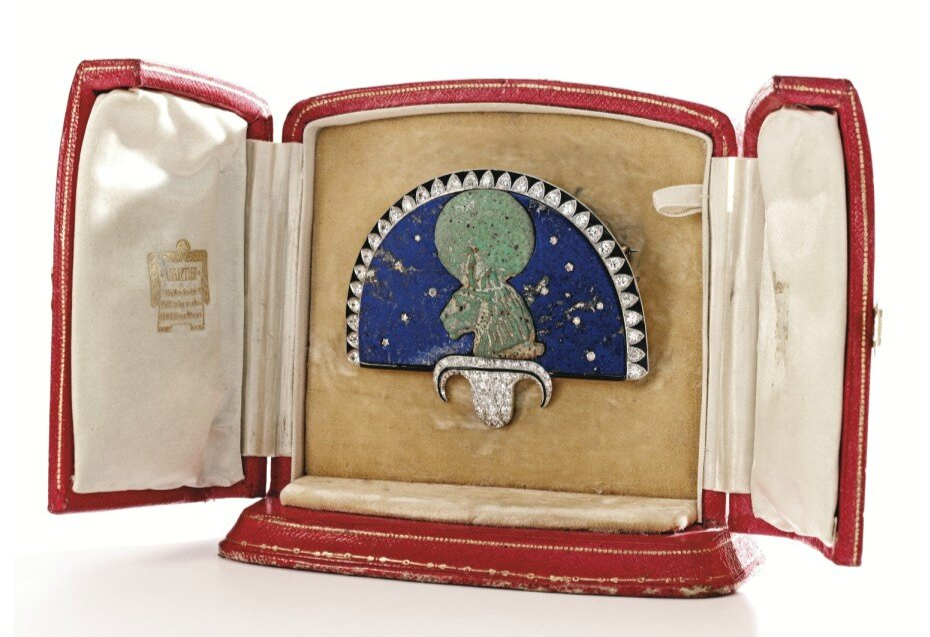
We first handled this jewel in 2007 and six years later, in 2013, we were fortunate enough to come across an even more impressive example of a Cartier fan brooch: set with an ancient green glazed faience bust of the goddess Sekhmet, set against a lapis lazuli sky twinkling with diamond stars bordered by a black enamel and diamond-set stylised lotus motif and still housed in its original Cartier fitted case, (see the two images above).

This example first featured in an advertisement in The Illustrated London News, of 26th January 1924, which gives an idea of the range of jewels set with fragments of Egyptian artifacts, that Cartier was offering just over a year after the opening of the tomb of Tutankhamun. The page is titled The ‘Tutankhamen’ Influence in Modern Jewellery.
